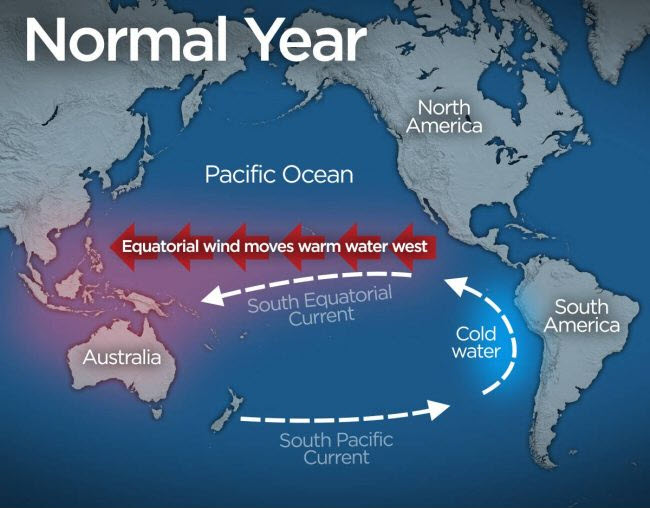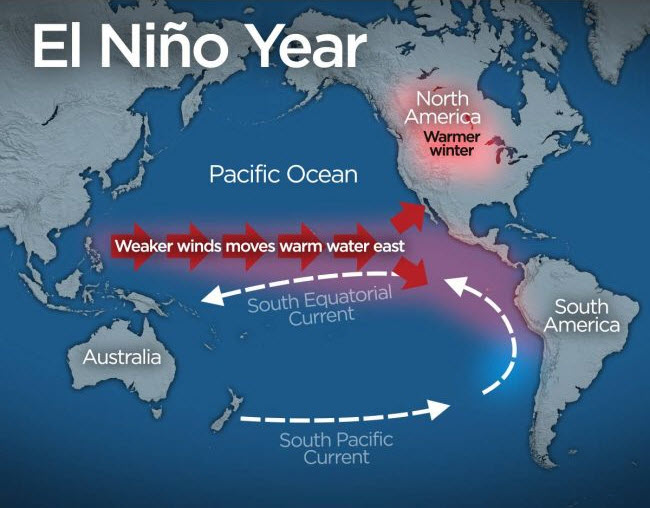Understanding El Niño
El Niño refers to a recurring climate pattern characterized by unusually warm ocean temperatures in the central and eastern equatorial Pacific. This phenomenon has far-reaching consequences, impacting weather systems worldwide. The name “El Niño” originates from Spanish, translating to “the little boy” or “Christ Child,” as it was first recognized around Christmas by Peruvian fishermen who noticed the appearance of warm waters off the coast.
The Causes of El Niño
El Niño is an intricate interaction between the atmosphere and ocean known as the El Niño-Southern Oscillation (ENSO). Its two primary phases are El Niño (warm phase) and La Niña (cool phase). The driving force behind El Niño is the weakening of the trade winds that usually blow from east to west across the equatorial Pacific Ocean. During normal conditions, these trade winds push warm surface waters towards the western Pacific, allowing cold, nutrient-rich waters to upwell along the South American coast—a process that supports a thriving marine ecosystem.
However, during an El Niño event, the trade winds weaken, causing the warm surface waters to slosh back toward the eastern Pacific, leading to a dramatic increase in sea surface temperatures. This warming disrupts the usual weather patterns, with far-reaching consequences.


Effects of El Niño
1. Altered Weather Patterns: El Niño disrupts the global atmospheric circulation, leading to a shift in weather patterns. Affected regions may experience heavy rainfall, flooding, or droughts, depending on their geographical location.
5. Economic Consequences: The wide-ranging impacts of El Niño can have economic repercussions, affecting industries such as agriculture, fisheries, tourism, and insurance.
El Niño’s Counterpart: La Niña
As El Niño’s cooling phase, La Niña presents its own set of challenges. During a La Niña event, the trade winds strengthen, causing an increase in cold water upwelling along the South American coast. This, in turn, leads to cooler sea surface temperatures in the eastern Pacific and influences weather patterns in ways opposite to those of El Niño.
Conclusion
El Niño remains one of nature’s most captivating and complex phenomena, showcasing the interconnectedness of Earth’s systems. Its impacts reverberate across continents, affecting climate, ecosystems, and human livelihoods. As we continue to study and understand this natural wonder, we gain valuable insights into the delicate balance of our planet’s climate system. By monitoring and preparing for El Niño and La Niña events, we can better adapt to their effects and work toward building a more resilient and sustainable future.










